[ad_2]
Source link



There’s a kindness in the ability to forget. I myself constantly try and not remember the childhood streets I walked down a child in Khartoum, of eating fatoor at my grandmother’s home and of the hope that erupted on the back of revolution in Sudan in 2019. The place and its people now live in disarray, among the cruel remnants of a purposeless war. The optimism of that era feels ludicrous in retrospect so better to try and forget the things you once held dearest.
Yet that, of course is a privileged position, as unlike I, so much of the Sudanese diaspora could not speak of the horrors enacted by the genocidal militia leader known as Hemedti, and so work like this documentary from Hind Meddeb impresses upon us all to remember. There’s a quiet moment in Sudan, Remember Us where a young activist paints over a crumbling wall not far from my childhood home, her brush moving with a deliberateness that makes time stretch. It’s not just paint; it’s insistence, even if that wall likely has been now reduced to a pile of rubble. Meddeb’s documentary is full of such moments, of gestures weighed down by a history of violence, but simultaneously buoyed by a hope that refuses to die.
Following the euphoria of the revolution, when Omar al-Bashir was ousted after three decades of authoritarian rule, Meddeb traces the fallout through the eyes of those who truly believed that something new might emerge from the blood strewn ashes. What makes this film extraordinary is its refusal to romanticise that belief. Instead, it sits with the disillusionment, the justified fear and the impossible resilience of young Sudanese artists and activists whose lives become quiet testaments to the revolutionary potential that was squandered.
Meddeb, a French-Tunisian journalist, employs a gonzo blend of handheld camerawork and vertical smartphone videos, and the film steps beyond the formalities of traditional filmmaking, just as a generation of Sudanese activists have broadened their horizons. If there’s a fault here, it’s not in the film’s ambition, but in its scope. Few people are aware of the hardships Sudan has endured over the past few decades, and the film doesn’t aim to educate them with an overabundance of context. Instead Meddeb commits to speaking directly to and with those who lived it. The result is something more intimate, more painful: a film that mourns the loss of collective innocence; laments the naivety of hope; but also insists on recording the bravery of bearing witness.
There is no false uplift here. No closing text promising a brighter future around the corner. Sudan, Remember Us ends with a silence that echoes across a cruel void of indifference. The title is less an appeal to the West than a message to the Sudanese diaspora who would rather compartmentalise, and to the disappeared and displaced, to those still fighting. It’s not an easy watch, and nor should it be. But in giving space to those who cannot and should not be erased, Sudan, Remember Us becomes not just a documentary. It is an act of resistance in itself.


I, on the other hand, was determined to commit as much of my day to memory as I could – and it was clear, as a I arrived early at the venue, the Horsebridge Arts Centre, that others were of a similar mind; a crowd was already gathering, chatting over tea served up by Noël himself, and rubbing shoulders with guests including Cushing co-stars Melvyn Hayes and Caroline Munro. I’ve written for Intermission and am a regular contributor to the TPTV podcast, so caught up with Sarah and Mel Byron, the Cronins’ chief factotum. Then it was time for the day’s action to begin.
After a brief introduction, the 150 or so hardened Cushing fans heard from Hayes, Munro, and former Hammer Films runners Phil Campbell and Brian Reynolds, who regaled us with tales of working with the great man, but the most amazing stories came from Geoffrey Hughes, whose father sold their family home to Peter and his wife Helen in the 1950s. The Hughes clan moved a few doors away, but remained friends with the couple; Geoffrey and his siblings appear to have been surrogate nephews and nieces to the Cushings, who were unable to have children of their own. Peter treated them to gifts from the local toy shop and encouraged their hobbies. I once interviewed the actor William Franklyn about his work with Cushing. He told me his daughters nicknamed him St Peter; if the tales recalled here are anything to go by, it was rather fitting.
Afterwards, we watched The Curse of Frankenstein (1957), the film that began the actor’s long association with Hammer’s gothic horrors, before a brief lunch. The fun continued afterwards; like kids on a school trip, we were split into four groups, each taking it in turn to tackle various activities. For me, it began with a guided tour of some Cushing hotspots with comedy historian Andre Vincent. He admitted he wasn’t an expert in his subject, but in a way, that might have been an advantage – he really had to have done his homework, ‘winging it’ would not do for the audience of ardent Cushing fans. Nevertheless, he did miss out the Tudor Tea Rooms, the actor’s favourite eatery.
What we did see, however, was Cushing’s View, a spot looking out to sea towards the Maunsell forts in the distance. Unfortunately, a couple were sitting on the bench donated by the Cushings and steadfastly refused to move, despite 30 pairs of glowering eyes boring into their souls. (Vincent had earlier described the local folk as resolute and they were proof of that.) Cushing’s beachfront house, complete with its top-flight art studio, was also featured, along with places he would visit, such as the local golf course (to admire the view rather than play), as well as the local Wetherspoons pub – a former cinema now called The Peter Cushing.
It was then time to watch a 1992 interview, carried out by journalist Peter Williams (who was present to discuss the show) for his TV series The Human Factor, in which Cushing discusses his spiritual side as well as his love for his wife, who by then had been gone for over 20 years.
A trip to the local museum followed, where a plucky band of volunteers proudly showcased their exhibition devoted to the local hero, including his bicycle, his art equipment (Cushing was a skilled watercolourist) and a costume from The Masks of Death (1984), his final outing as Sherlock Holmes. Then it was back to the Horsebridge for the last event: a Cushing quiz. I’m proud to say I won.
After a quick catch-up with Mel, in which we mused on what Cushing would have thought of all the fuss (we decided he would have been touched, embarrassed and surprised), I was back on the train to St Pancras, passing some of the Charlton fans going in the opposite direction. They were jubilant, having won the match and therefore promotion to the Championship next season.
They can’t possibly have been as happy as me, however. I mean, I spent the day ‘with’ my hero, and then topped it off by winning some cake. Surely there can be no finer end to an event than that.
Talking Pictures TV’s Peter Cushing Celebration ran from May 25 – 26 2025.
In 1939, Hollywood was basking in an almost mythic glow. It was the year of Gone with the Wind, The Wizard of Oz, Mr. Smith Goes to Washington, and Stagecoach—a cinematic apex unmatched in American history. The studio system was operating at full throttle, its stars luminous, its moguls wealthy, its audiences faithful. Then the world changed.
Cinema Scholars looks back on how the outbreak of World War II in Europe and America’s entry into the war after the attack on Pearl Harbor in December 1941 shifted the role of the film industry from escapism to engagement. The golden machinery of Hollywood became an arm of the American war effort, voluntarily, zealously, and sometimes self-servingly. From 1939 to 1945, the studio system reached both its peak in patriotism and its structural limits.

At the heart of the system were still the Big Five—MGM, Warner Bros., Paramount, 20th Century-Fox, and RKO—and the Little Three—Columbia, Universal, and United Artists. These vertically integrated studios controlled the flow of content from the soundstage to the theater marquee. The stars were bound by contract, and the films rolled out on a strict schedule.
In the early 1940s, despite material shortages and labor tensions, the studios remained profitable. War was good for business. Audiences flooded theaters for both newsreels and narrative films. By 1943, weekly movie attendance in the U.S. reached a staggering 90 million—more than half the country’s population. Yet the pressure to support the war effort, maintain public morale, and adhere to federal messaging introduced unprecedented constraints—and opportunities.
The U.S. government quickly recognized film’s potential as a propaganda tool. In 1942, President Franklin D. Roosevelt established the Office of War Information (OWI), which coordinated with Hollywood to ensure that films aligned with national interests. The OWI issued guidelines: portray Allied unity, avoid excessive gore or defeatism, include women in the workforce narrative, and never glorify the enemy.
Studios collaborated—sometimes reluctantly, often eagerly. Frank Capra, fresh off his Oscar wins, joined the Army and produced the Why We Fight documentary series. John Ford and John Huston also enlisted, making powerful wartime documentaries like The Battle of Midway (1942) and Report from the Aleutians (1943).

Even fictional narratives carried messages. Warner Bros., known for its hard-hitting social dramas, led the charge. Casablanca (1942), though not conceived as propaganda, became a powerful allegory for resistance and sacrifice. Mrs. Miniver (1942), a British-American co-production from MGM, was lauded by Churchill as “worth six divisions.”
Many of Hollywood’s leading men exchanged tuxedos for uniforms. Jimmy Stewart flew combat missions in Europe. Clark Gable, devastated by his wife Carole Lombard’s death in a war bond flight crash, enlisted in the Army Air Forces. Tyrone Power joined the Marines. Meanwhile, female stars like Bette Davis, Marlene Dietrich, and Hedy Lamarr toured the country raising millions in war bonds.
The Hollywood Canteen, co-founded in 1942 by Davis and actor John Garfield, served as a star-studded morale booster where servicemen could dance with movie stars and eat for free. Studios encouraged their stars to appear humble, patriotic, and accessible—a vital part of the war machine’s emotional arsenal.
From 1939 to 1945, genres evolved. War films surged in popularity, but so did musicals, screwball comedies, and noir. Films like Yankee Doodle Dandy (1942) wrapped patriotism in razzle-dazzle. The More the Merrier (1943) explored the housing shortages caused by wartime mobilization, blending social commentary with romantic comedy.
Meanwhile, the shadow of darkness grew. The trauma of war and global instability helped birth film noir—cynical, morally ambiguous stories often featuring returning soldiers and broken dreams. Films like Double Indemnity (1944) and Laura (1944) spoke to a restless, more jaded America.

The war years were profitable, but the old studio machinery was beginning to creak. Labor strikes erupted at Disney and Warner Bros., challenging the studios’ treatment of workers. Independent producers like David O. Selznick and Samuel Goldwyn pushed for greater creative control outside the traditional studio hierarchy. The OWI’s influence, while significant during the war, also opened the door for federal scrutiny. As the Cold War dawned, the alliance between Washington and Hollywood would take a darker turn.
And looming in the distance was a legal storm: the 1948 Paramount Decree, a Supreme Court ruling that would end the studios’ monopolistic grip over theaters. But the roots of that decision stretched back into the war years, as independent theaters began to question the fairness of the studio stranglehold.
By 1945, the war had ended, but the world—and Hollywood—had changed irrevocably. The studios were still powerful, but they were no longer unquestioned emperors. Stars wanted autonomy. Directors demanded creative freedom. And audiences, exposed to the harsh realities of war, were growing more sophisticated.
The studio system would stagger into the 1950s, still producing hits, but its golden age was over. Between 1939 and 1945, Hollywood had become more than entertainment. It had become a national institution—and a battlefield of ideas.
Key Films and Events, 1939–1945
Join for the third and final part of our Rise and Fall of the Hollywood Studio System series: The Unmaking of the Dream Machine 1946 – 1950.
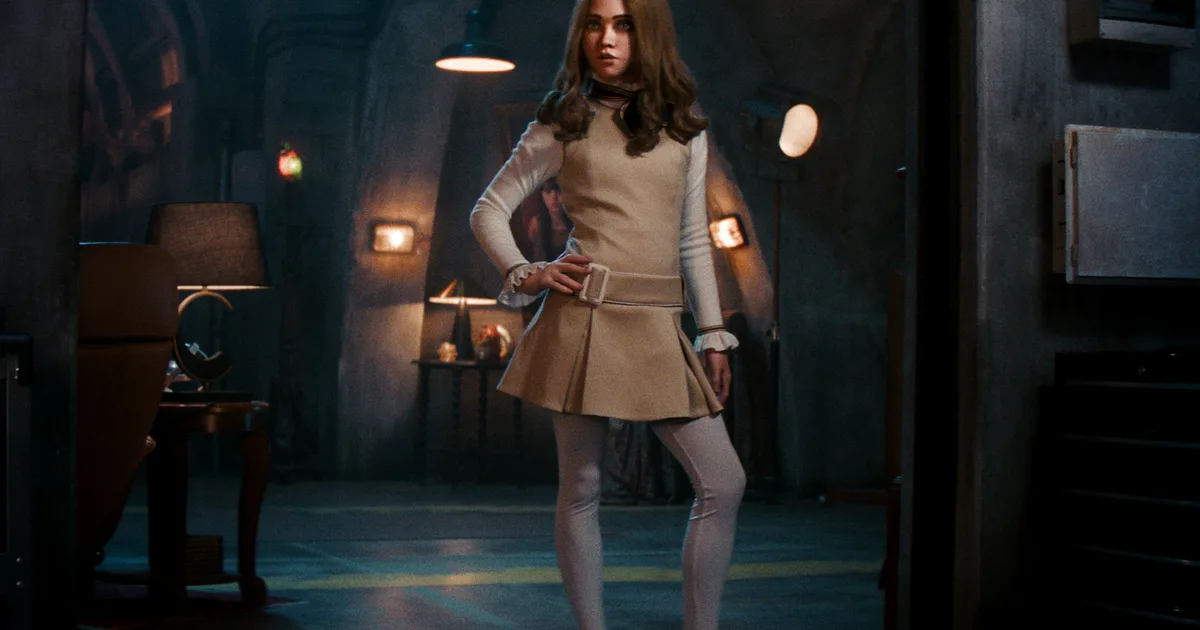

The better moments are in the friction between M3GAN and her human companions; the eccentricities of her being programmed for children clashing with simmering anger from the first film. It’s better (and funnier) in building on the adversarial relationships made in the first film; the best callback sees her physically forcing Gemma to sit and listen to her belting out an insufferable radio song after a pep talk.
It’s better still when the comedy crosses with sincere questions about M3GAN’s personhood, and that she phyically feels this believable is a credit to the film’s animatronics team. It’s less charming, however, when M3GAN speaks like Bender from Futurama (“Alright, meat sacks”), or worse, a Deadpool-esque figure who yells things like, “Hold on to your vaginas!” before recklessly driving a supercar.
When Johnstone’s not aggressively expanding M3GAN lore, there’s some alignment between M3GAN’s (misguided and amusingly morbid) attempts at winning over her human companions, and M3GAN 2.0’s own charm offensive. In all of its quips and surprisingly energetic action, it’s riffing on Mission Impossible and Terminator 2 plotting and it’s actively trying to be a crowd pleaser. But the filmmaker sometimes overextends: some of the fights do become a little numbing after a while.
Similarly, for a sequel where the main character is hounded by the mistakes of the their past, M3GAN 2.0 runs back a few of the same sticking points — namely some laborious pacing which, here, is exacerbated by the sheer amount of story there is. It’s hard not to wish for a little more economy, especially when there are so many moments where the appeal of a sillier follow-up feel clearer. Despite occasionally indulging its worse instincts, there’s still a surprising amount of fun to be had with M3GAN 2.0 – a bigger and funnier sequel which could stand to pull back on both of those elements.
Let’s make a film in 2 hours
May take a moment to load…
This project is a student favorite.
It is a great challenge and lets students show off their creativity and skills.
Change the prompt and use this project for block schedules, exam days, or advanced classes icebreaker / team building 1st day of class to check out the skills in the room.
Must be created in class / today
At least 1 minute
No longer that 3 minutes
Individual or group
Must be turned in by end of class
Prompt must be said
Prop must be used (if given)
Include: 5 Sec. Slate / Title/ Credits
1 edit per group
You may break copyright (If not for an out of class competition)
Prompt ideas can be idioms, simple phrases, or basic words. The key is that the prompt can be interpreted multiple ways so student films will have great variety.
See you next time on SCREENGOAT.
You Might Find These Interesting:
Free Production & Blogging Resources:

Copyright © 2023 Screengoat & Round-Circle, Inc.
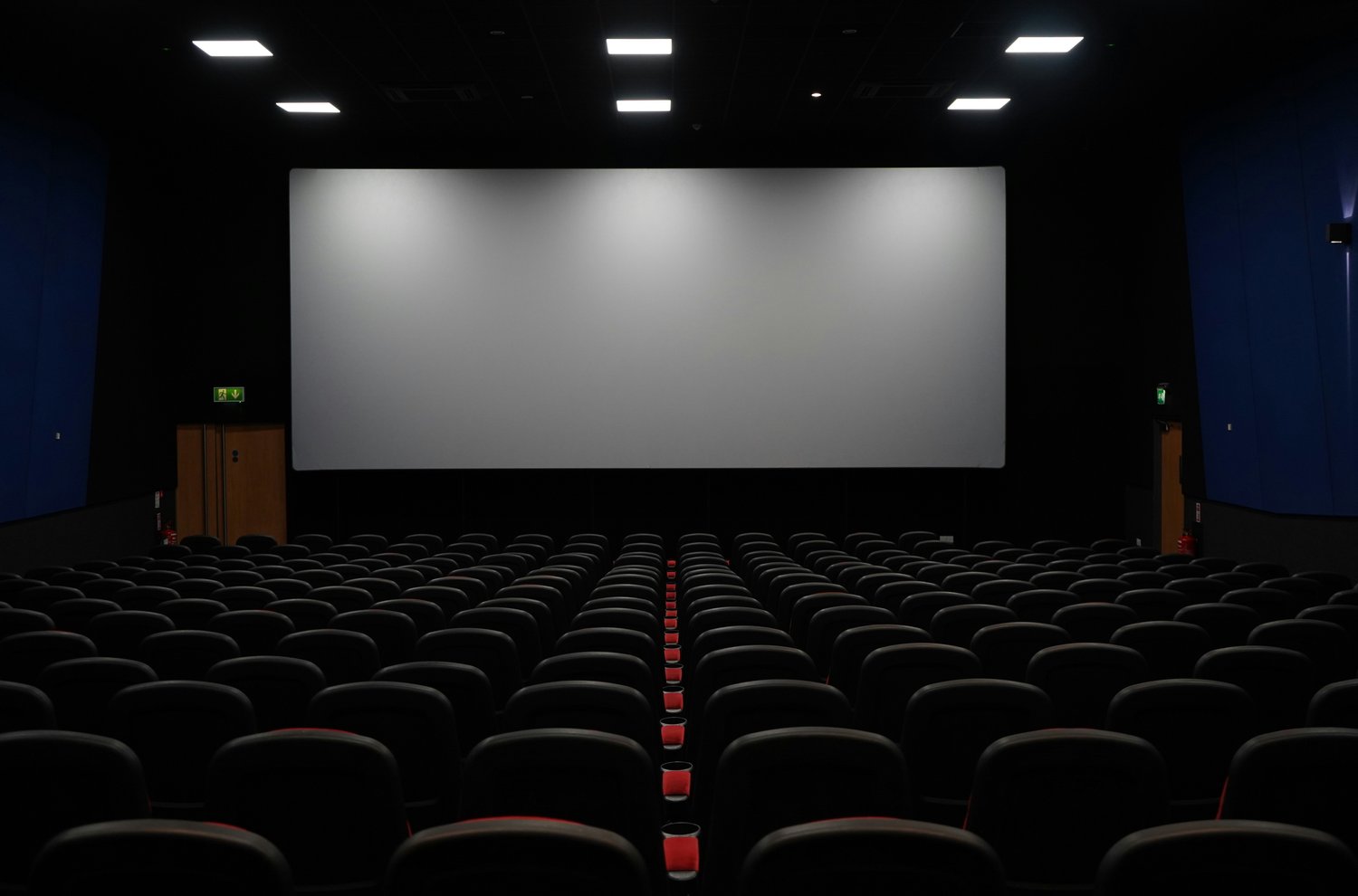

by Nancy Fernandez
The workweek can often feel like a long journey—especially by the time Thursday rolls around. You’re not quite at the weekend yet, but the promise of rest is within reach. That’s why Thursdays deserve their own form of emotional support—and what better way to uplift your mood than with a generous dose of feel-good movie memes?
Movie memes are not just funny or nostalgic; they’re relatable, comforting, and a great way to bring a smile to your face when you need it the most. Whether you’re stuck in back-to-back meetings, tackling a growing to-do list, or just trying to survive the week, these memes can be the perfect pick-me-up. Let’s dive into why feel-good movie memes are the ultimate Thursday remedy—and which films work best to create them.
By Thursday, many of us are caught in that peculiar in-between state: mentally ready for the weekend, but still physically and emotionally trapped in the workweek. It’s the day that often lacks the motivation of Monday or the celebratory spirit of Friday. That’s exactly why Thursday memes have become so popular on social media—they fill that emotional gap with humor and hope.
Thursday memes give people something to relate to and laugh about. And when you pair them with scenes from beloved movies, the joy is doubled. Think of Forrest Gump running across the country paired with a caption like, “Running toward the weekend like…” Or Julia Roberts in Pretty Woman captioned, “That Thursday glow before Friday hits.”
Movie memes work so well because they connect two things we love: cinema and emotion. Films already evoke powerful feelings—joy, nostalgia, laughter—and memes take that emotional impact and distill it into something short, punchy, and shareable. The right meme can turn a dull Thursday into something a little more magical.
What makes movie memes even better is their ability to take iconic moments and recontextualize them. A dramatic line becomes a motivational message. A comedic blunder becomes a hilarious reflection of your workday. The magic lies in combining well-known movie scenes with relatable, everyday feelings.
We often underestimate how small, simple things can improve our mental health. A positive Thursday meme may only take a second to read, but it can leave a lasting impression. In fact, science shows that even brief moments of laughter or joy can trigger endorphin release and reduce stress levels.
When that positivity is delivered through the lens of a movie you love—whether it’s The Pursuit of Happyness, Legally Blonde, or The Lion King—the connection becomes more personal. You’re not just laughing at a random image; you’re re-experiencing the emotion of a favorite scene, now dressed up with a clever twist.
Movie memes also serve as digital comfort food. They’re a quick, nostalgic escape from reality. That’s why so many people turn to them during tough days. On Thursdays, when the weekend feels so close yet so far, a positive movie meme can be just the boost you need to push through.
Not all movies are created equal when it comes to meme potential. Some are more iconic, quotable, and expressive than others. Here are a few genres and titles that are especially rich for crafting feel-good movie memes:
Comedy Classics: Mean Girls, The Hangover, Bridesmaids
Perfect for sarcasm, sass, and relatable workplace humor.
Inspirational Films: Forrest Gump, The Pursuit of Happyness, Rocky
Great for motivational memes that encourage pushing through the week.
Rom-Coms: Notting Hill, 10 Things I Hate About You, Legally Blonde
Sweet, charming moments make for adorable Thursday memes.
Animated Joy: Toy Story, Finding Nemo, Zootopia
Wholesome characters with expressive faces ideal for cheerful captions.
Fantasy Favorites: Harry Potter, The Lord of the Rings, The Princess Bride
These epic adventures provide both inspirational and humorous meme moments.
Whether you’re laughing at a Dobby quote about being free (because the weekend is coming), or using Gandalf’s “You shall not pass!” to describe your email inbox, the meme magic is real.
One of the best parts about feel-good movie memes is how easily they can be shared. Send one to a coworker who’s dragging through their Thursday slump. Post one on Instagram with a clever caption. Even a group chat full of stressed-out friends can benefit from a few movie memes to lighten the mood.
Creating your own is also easy. Pick a favorite movie scene, add a relevant caption, and voilà—you’ve just made someone’s Thursday a little better. Use meme generator apps or sites, or simply create them using screenshots and your phone’s text tools.
Thursdays don’t have to feel like the forgotten middle child of the workweek. With the right mix of humor, nostalgia, and movie magic, they can become a time to laugh, recharge, and look forward to the weekend ahead. Feel-good movie memes aren’t just internet trends—they’re tiny acts of emotional self-care.
So the next time Thursday rolls around and you’re feeling stuck, scroll through a few movie memes—or better yet, make your own. You never know whose day you’ll brighten (including your own).
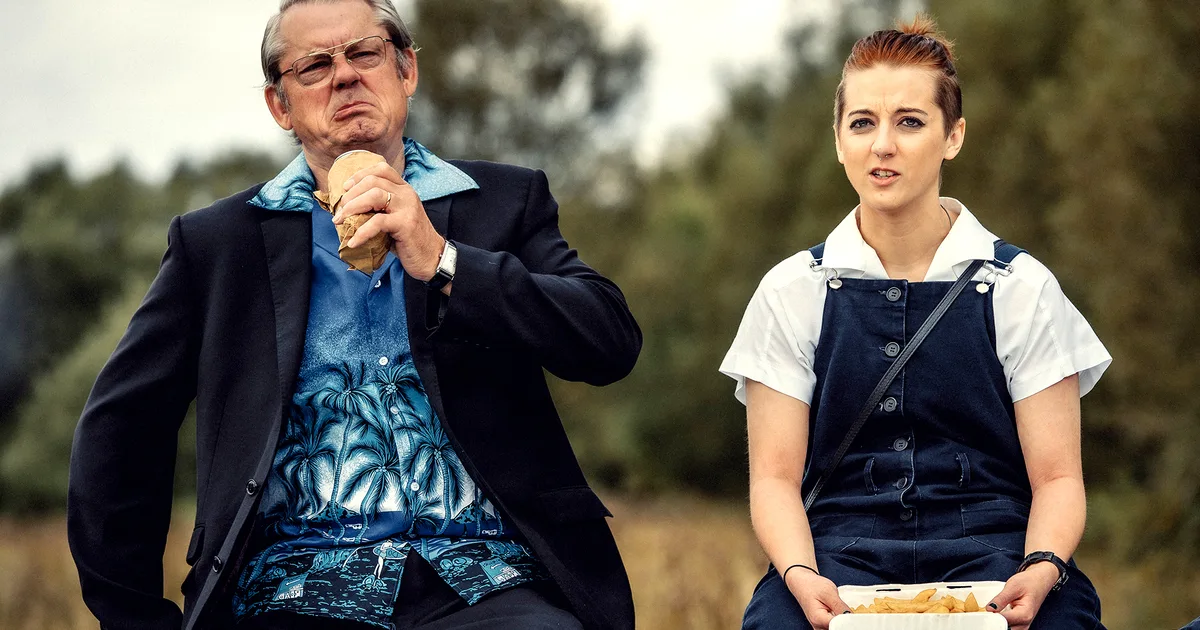

Like the doddering sexagenarian at the centre of its plot, Chicken Town lumbers along, frequently mis-stepping and fluffing its lines. It’s a dull, eye-roll-inducing half-way house of a film, neither a biting, black comedy nor an uplifting, whimsical jaunt. British comedy royalty Graham Fellows stars as Kev, who teams up with teenagers, Paula (Amelie Davies) and Jayce (Ethaniel Davy) to sell the weed he’s accidentally grown in his allotment. The few sincere interactions between this central trio are the sole highlights of the film, as Fellows’ comedy talents are wasted in a flimsy script.
Chicken Town bites off more than it can chew as a small-town, crime caper quickly spirals into conflict with the powerful family at the heart of the town’s livelihood and a serious of increasingly ridiculous acts of violence. However, instead of pouring effort into providing any standout, laugh-out-loud gags, the writer/director overly relies on these sudden but brief moments of intensity to liven up his film. The less said about the racial prejudice levelled at Jayce’s friend, Lee Matthews Jr (Ramy Ben Fredj), the better. It’s tasteless, cruel, and painfully lazy. Come film’s end I was ready to hightail it out of Chicken Town as fast as I could.
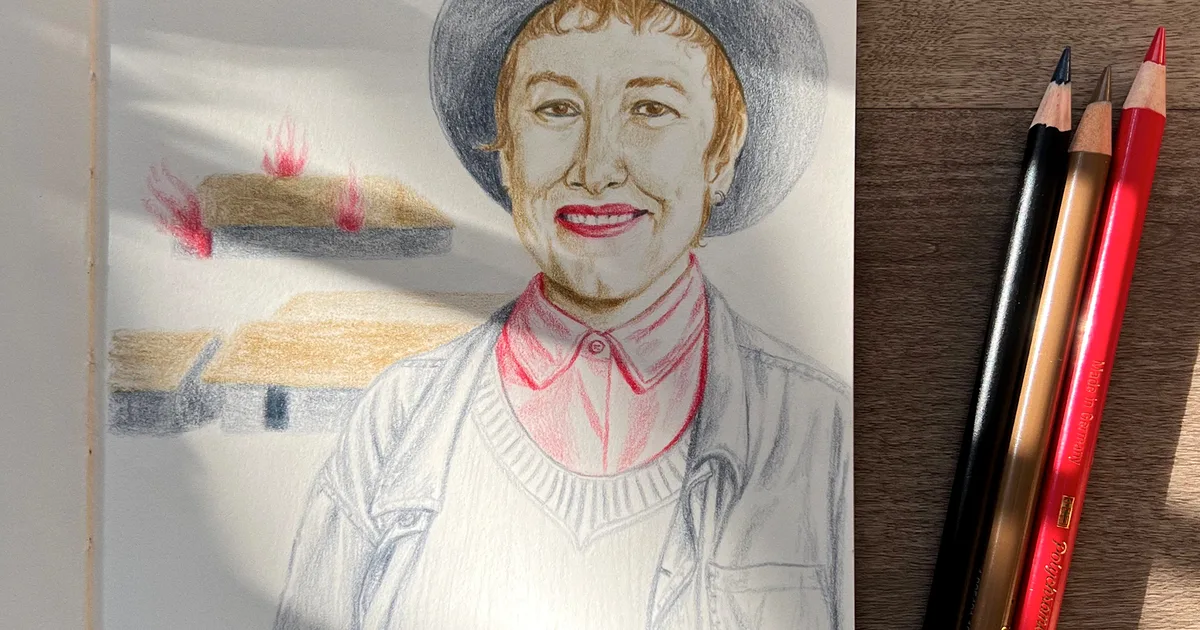
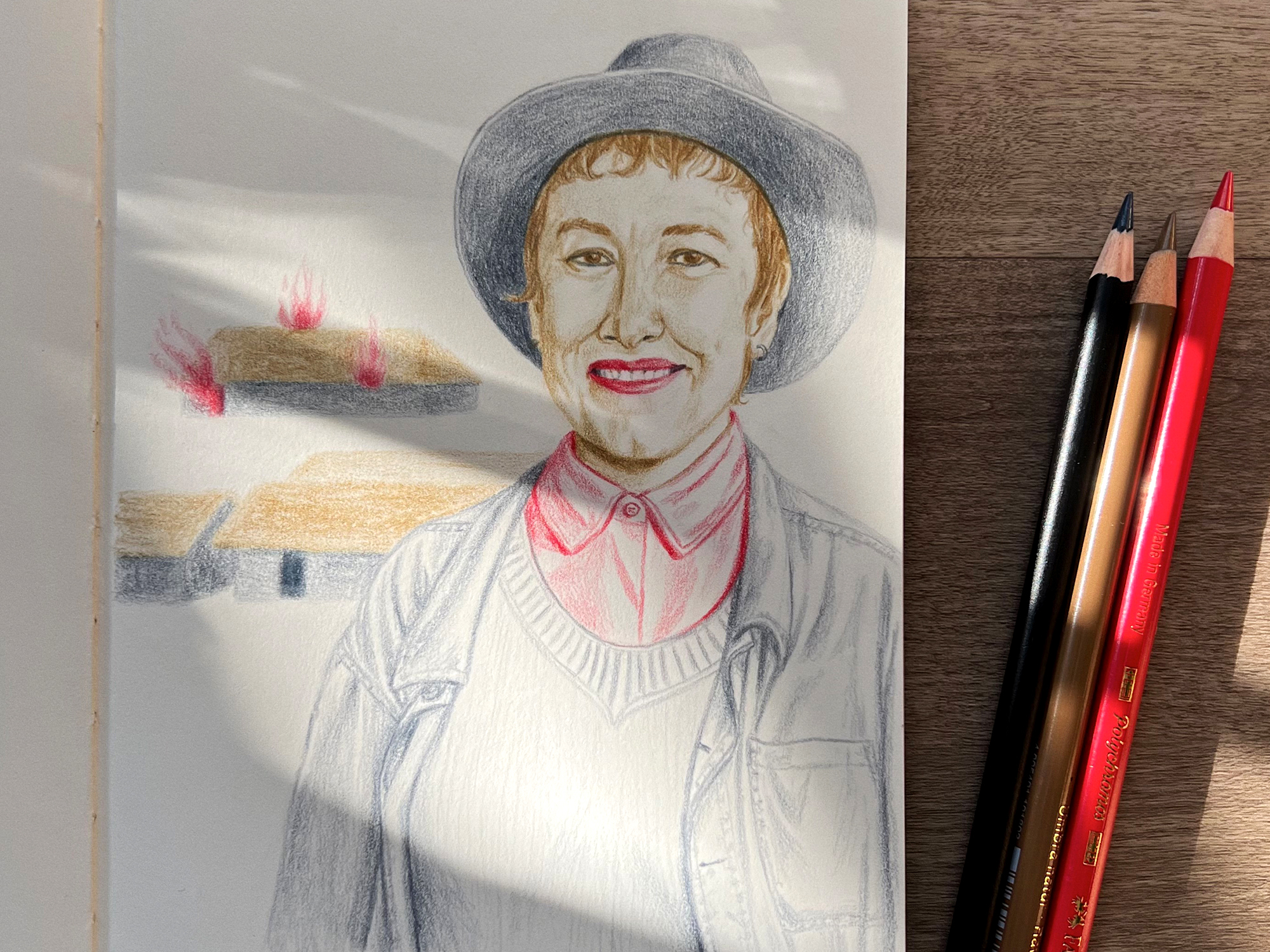
The playful surrealism of Greek writer/director Athina Rachel Tsangari’s 2012 second feature, Attenberg, landed her on the map of filmmakers to watch, while also providing a curious starting point for a journey that has taken in withering satire (2015’s Chevalier), small screen domestic comedy (2019’s Trigonometry, made for the BBC), and most recently, the existential historical epic (2024’s Harvest), adapted from the 2013 novel by Jim Crace and starring Caleb Landry Jones.
LWLies: As someone from Greece, were you ever conscious of an outsider perspective on the material of this novel?
Tsangari: I felt like it was completely my story because I come from a long lineage of farmers who recently lost their island to a highway. It’s like the biggest highway that connects the centre of Athens all the way to the north. It literally went over my family’s ancestral land. We were labourers since I was like four years old. And it doesn’t matter what we’re doing in the city in the winter when we’re there, we were 100 per cent indoctrinated into the arts of the earth. So yes, it was a very personal. And also, I live in a borderland, a very poor border with migrants and migrant workers everywhere around me. So this particular historical moment, talking about the enclosure act, in a way, created the first recorded Western refugee movement.
Yet Harvest is political without being polemical; it does not romanticise the world that is being lost.
It was more about posing the questions and not giving any answers. And also not being judgmental about about the central hero’s, passivity. And the townsfolk, are they innocent and naïve? Is it a prelapsarian innocence, or are they all complicit in their own downfall? Are they pacifists or are they violent? They’re both, you know. Even the mapmaker, has he been co-opted or is he just a romantic? It’s about how easily the narcissism of artists can turn into a tool in the hands of power. And you kind of forget that it has a real-world impact as well; that people see it as having a real-world impact.
Tell us about working with Caleb Landry Jones and building this strange, anxious, passive character together.
I think he really suffered. And sometimes he would explode. He had to release all this tension. As a person himself, he’s just so proactive. He has so much respect for humanity. And he has such a such a strong code of honour. In terms of the story, there was so much against him that I think all of this conflict, all of this boiling inside him, really created a extraordinary world. And I would say he is inactive, but he’s not passive – because you can feel the tension inside him. You see it on his face, that he wants to do something. Yeah, but but feels like he can’t, it’s not his place. You know, he’s not quite ready to make a decision.
The film looks absolutely gorgeous, shot on film by Sean Price Williams. How did that collaboration work?
The first thing that I do is a playlist before I even start bringing in images, because he works with music as an inspiration. I come from theatre, so I shoot the entire scene. I don’t stop. We don’t do coverage. The fact that he works with natural light is perfect for me. And then he also knows, when he shoots with me, he’s just going to set up a few lights and then hardly change them. And we’re going to shoot 360 degrees. No one will ever know when they’re going to be on camera. There is a sacred handshake between us. A secret relationship where we don’t talk. We don’t need to.